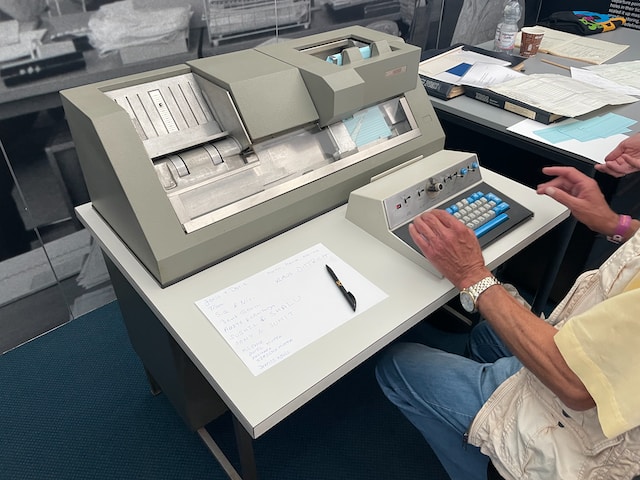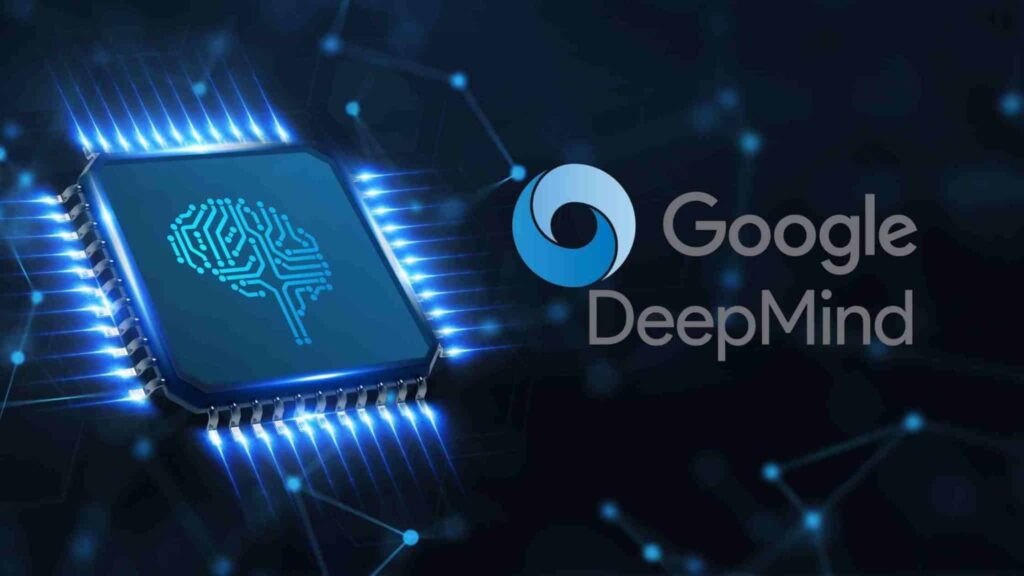OpenAI’s chatbot, ChatGPT, owes its success to the work of its data trainers. These workers label training data and engage in conversations with the bot, correcting its generated answers. The hourly wage for these outsourced workers in the United States exceeds $15.
While some engage in this outsourcing job to make ends meet, others aim to stay ahead and understand the development of artificial intelligence on the front lines.
Alexej Savreux, a 34-year-old residing in Kansas City, Missouri, has had various jobs throughout the years. He has sold fast-food sandwiches, worked as a security guard, handled garbage, and even installed audio systems in theaters. Most of his previous work involved physical labor.

Now, he has become an AI data trainer and no longer needs to engage in manual labor.
As part of the vast army of outsourcing workers in the AI industry, Savreux and others have been training artificial intelligence systems behind the scenes on how to analyze data. This enables AI to ultimately generate astonishing text and images for users. To enhance the precision of AI, Savreux labels various images and predicts the appropriate text the application should generate.
Although their hourly wage exceeds $15, it is insignificant compared to the engineers in Silicon Valley, and they receive no benefits whatsoever.
Over the past few years, Savreux and other outsourced workers have devoted a considerable amount of time to train OpenAI’s AI system, allowing ChatGPT to provide better answers to users’ questions. These workers provide the necessary text, labels, and other information that AI companies like OpenAI require, satisfying the never-ending demands of these enterprises.
If there are no Image labels, even the best AI model is useless
In November last year, OpenAI released the AI chatbot ChatGPT, sparking a wave of excitement in the field of generative artificial intelligence. Savreux said, “We are doing the hard work, but without us, there would be no AI language systems.”

You can design all the neural networks you want, you can involve all the researchers you want, but without labels, you don’t have ChatGPT.
Savreux, AI Data Trainer
This job may not bring Savreux much fame or wealth, but in the field of artificial intelligence, it is an easily overlooked but important role. The labor contributed by outsourcing personnel pales in comparison to the magic of new technologies.
The nonprofit organization Partnership on AI, based in San Francisco, is dedicated to advancing research and education in artificial intelligence. Sonam Jindal, the project lead for AI, labor, and economics at the organization, said, “Many people celebrate the achievements of artificial intelligence, but we overlook an important component, which is that AI still heavily relies on a large workforce.”
For years, the tech industry has relied on thousands of low-skilled, low-income workers to support its massive computer operations, from punch card operators in the 1950s to recent Google contract workers complaining about being treated as second-class citizens in the company. With the rise of various outsourcing platforms, many online gig jobs have also become more popular.

Now, the thriving AI industry is experiencing a similar scenario.
Outsourced workers of AI Industry
Outsourced workers put in the most effort, but their positions are not secure. This type of outsourcing work is usually unstable and can change at any time due to shifts in demand. Employees in this line of work either directly sign written contracts with the company or are hired by third-party suppliers specializing in temporary or outsourcing businesses.
They receive few or no benefits such as health insurance, which means lower labor costs for tech companies. Additionally, these jobs are often anonymous, with all credit given to the high-level executives and researchers of the tech companies.
In a 2021 report, the Partnership on AI warned that the demand for data enrichment, which involves adding, updating, cleaning, and processing data from external sources to improve existing datasets, is set to increase.
The organization suggests that the AI industry should strive to promote fair compensation and other improvement practices. Last year, they released voluntary compliance guidelines for companies to follow.
Currently, DeepMind, a subsidiary of Google, is the only tech company publicly committed to adhering to these guidelines.

Kendall stated, “Many people have already recognized the importance of this. The challenge now is to make companies truly act upon it.”
“This is a new field of work created by artificial intelligence,” she added. “We have the potential to make this work high-quality, and practitioners should be respected and valued for their contributions to technological advancement.”
Recently, there has been a surge in job demands, and some workers involved in outsourcing AI work are beginning to demand better treatment.
According to reports, more than 150 workers in Kenya who engage in AI work for Facebook, TikTok, and ChatGPT formed a union last Monday, citing low wages and a certain degree of mental harm caused by the work. Facebook and TikTok did not immediately respond to requests for comments. OpenAI declined to comment.

So far, workers in the United States engaged in outsourcing AI work have not taken similar actions, as they continue to silently contribute, word by word, to the development of AI systems.
demand for AI data trainers is growing
One of the outsourced worker, Sahler entered this industry through online job advertisements and now works from home using a laptop. He believes that this gig in the AI field has helped him escape homelessness, considering that the $15 per hour wage is higher than the minimum wage in Kansas City. While some may consider these jobs insignificant, he believes they are essential entry-level positions in machine learning.

Recruitment information for outsourcing AI jobs both reflects the surge in industry demand and highlights the exhausting nature of this work.
Invisible Technologies, a well-known AI training outsourcing intermediary company, claims in its job advertisements that they are seeking “senior artificial intelligence data trainers.” This job is classified as an entry-level position with a starting hourly wage of $15 but could also be “beneficial to people.” The job posting states, “You can think of this job as a language arts teacher or the most influential technical private tutor.” Invisible Technologies states that new employees will work “under agreements established by world-leading artificial intelligence researchers” but does not disclose the names of their clients.
While there is no definitive data on how many outsourcing personnel are working for AI companies, this form of work is becoming increasingly common worldwide. A report from January of this year stated that OpenAI employed low-wage workers from Kenya to label text containing various forms of objectionable content to improve their applications.
Furthermore, earlier this year, reports indicated that OpenAI had hired approximately 1,000 remote outsourcing workers in Eastern Europe, Latin America, and other regions specifically for data labeling or training company software.
Although OpenAI CEO Sam Altman stated on Twitter that as of January this year, OpenAI was still a small company with only about 375 employees, this number does not include outsourced workers and does not fully reflect the company’s operational scale. An OpenAI spokesperson stated that no one can answer questions regarding the use of outsourcing AI workers.
The Minimal Threshold to Enter the AI World
Creating data to train artificial intelligence models is not always simple. Sometimes it can be quite complex, but it is enough to attract those who want to start a business in the field of artificial intelligence.
Jatin Kumar, a 22-year-old from Austin, Texas, graduated with a degree in computer science and has been working in the field of artificial intelligence for a year. He says that this has allowed him to understand the latest developments in generative AI technology.
It gives you the opportunity to start thinking about how to apply this technology before it reaches the general public
Jatin Kumar, 22 years old, working in the field of artificial intelligence
In addition, he has also founded a technology startup called Bonsai, which specializes in developing billing software for hospitals.
As an AI conversation trainer, Kumar’s main job is to have conversations with chatbots and ask various questions. This is part of the long process of training artificial intelligence systems. He says that it was simple at the beginning, but with experience, these tasks have become more and more complex.

“Every 30 to 45 minutes, you receive a new task to ask new questions,” Kumar says. The initial prompts can be simple, such as “What is the capital of France?”
Kumar says that he collaborates with around 100 other outsourced workers to generate training data, correct answers, and fine-tune the models through feedback on the answers.
Kumar mentions that other workers handle “labelled” conversation content. Some users provide feedback to the company on the chatbot’s answers, and workers read the conversations submitted by ChatGPT users. When a tagged conversation appears, workers classify it based on the type of error involved, and then it is used for further training of the artificial intelligence model.
“This is one way for me to help solve problems and learn existing technology with the help of OpenAI,” Kumar says.

